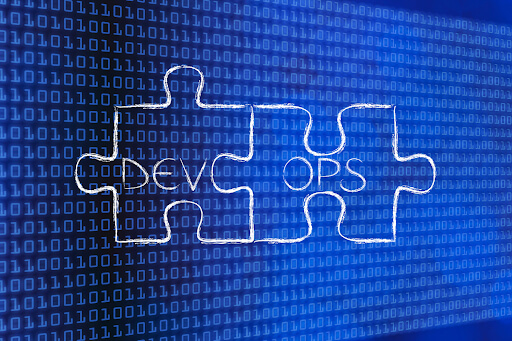DevOps Tools: A Comprehensive Overview.

In today’s fast-paced digital landscape, businesses are constantly seeking ways to deliver products and services faster and more reliably. This is where DevOps comes in, a methodology that combines software development and IT operations to streamline the software delivery process and infrastructure changes. At the core of DevOps are a variety of tools that automate processes, improve collaboration, and enhance efficiency.
In this article, we will provide a comprehensive overview of some of the key DevOps tools, including Jenkins, Ansible, and Terraform. We will explore their features, use cases, and the benefits they offer to organizations. So, let’s dive in and discover how these tools can revolutionize your software development and operations.
Also Read: An Introduction to DevOps and its Benefits.
What is DevOps?
Before going into details on DevOps tools, let’s understand the DevOps process. DevOps is a set of practices, principles, and cultural philosophies that aim to improve collaboration and communication between software development (Dev) and IT operations (Ops) teams. The main goal of DevOps is to shorten the systems development life cycle and provide continuous delivery with high software quality.
DevOps integrates and automates the work of software development and IT operations to enhance the ability to build, test, and release software faster and more reliably. It encourages a culture of collaboration, shared responsibility, and continuous improvement, where development and operations teams work closely together, share responsibilities, and integrate their workflows. This collaborative approach helps organizations to respond to market changes faster, improve customer satisfaction, and gain a competitive edge.
1. Jenkins: Empowering Continuous Integration and Delivery
Jenkins is a widely used open-source automation server that enables continuous integration and delivery (CI/CD) pipelines. It allows developers to automate the building, testing, and deployment of software applications, ensuring faster and more reliable releases. With Jenkins, organizations can achieve shorter development cycles, reduce manual errors, and increase collaboration among development teams.
1.1 Introduction to Jenkins
Jenkins offers a user-friendly interface and a vast plugin ecosystem that allows seamless integration with other tools in the DevOps ecosystem. It supports various programming languages, version control systems, and testing frameworks, making it highly versatile for different project requirements. The platform offers a wide range of features, including:
- Continuous Integration: Jenkins enables developers to integrate their code into a repository multiple times a day, facilitating early bug detection and faster feedback loops.
- Build Automation: Jenkins automates the building process, ensuring that applications are compiled, packaged, and tested consistently across different environments.
- Deployment Automation: With Jenkins, organizations can automate the deployment of applications to various environments, such as development, testing, and production.
1.2 Setting up Jenkins Environment
Setting up a Jenkins environment involves installing and configuring Jenkins on a server or a cloud-based instance. Organizations can choose between self-hosted Jenkins installations or opt for cloud-based solutions like Jenkins on AWS or Jenkins on Azure. The steps to set up a Jenkins environment typically include:
- Installation: Download and install the Jenkins server on the desired platform, following the official installation guide provided by the Jenkins community.
- Configuration: Access the Jenkins web interface and configure basic settings such as security, user management, and plugin management.
- Creating Jobs: Create Jenkins jobs to define the build and deployment processes for your applications. Jobs can be created manually or using Jenkins Pipeline, which allows for defining complex workflows as code.
1.3 Building and Deploying with Jenkins
Jenkins offers various ways to build and deploy applications, depending on the project requirements and complexity. Some common approaches include:
- Freestyle Projects: The simplest form of Jenkins jobs, freestyle projects allow developers to define build steps and configure build triggers. This approach is suitable for simple projects with straightforward build and deployment requirements.
- Pipeline Projects: Jenkins Pipeline provides a powerful way to define complex workflows as code. The declarative syntax allows developers to define stages, steps, and conditions, enabling highly customizable and scalable build and deployment processes.
- Integration with Other DevOps Tools: Jenkins can be seamlessly integrated with other DevOps tools like Docker, Ansible, and Terraform to enhance the CI/CD process. For example, Jenkins can automate the creation of Docker images, perform Ansible playbooks for configuration management, and orchestrate infrastructure provisioning with Terraform.

2. Ansible: Simplifying Configuration Management
Ansible is an open-source automation platform that simplifies configuration management, application deployment, and infrastructure orchestration. It uses a declarative language to define system configurations, making it easy to manage and maintain IT environments. Ansible’s simplicity and versatility have made it a popular choice among DevOps engineers for automating complex tasks.
2.1 Introduction to Ansible
Ansible operates in an agentless manner, meaning that it doesn’t require any additional software or agents to be installed on target systems. It uses SSH to connect to remote servers and perform configuration management tasks. Ansible playbooks, written in YAML, define the desired state of the system and the tasks to be executed to achieve that state.
Key features and benefits of Ansible include:
- Simplicity: Ansible’s YAML-based syntax and agentless architecture make it easy to learn and use. Playbooks can be version-controlled, shared, and reused across multiple projects.
- Idempotency: Ansible ensures that the desired state of the system is achieved regardless of the current state. This means that running an Ansible playbook multiple times will have the same result, making it safe to apply configurations repeatedly.
- Flexibility: Ansible can manage a wide range of systems, including Linux, Windows, network devices, and cloud platforms. It provides a vast collection of pre-built modules that abstract complex operations, allowing for easy integration and customization.
2.2 Setting up an Ansible Environment
Setting up an Ansible environment involves a few essential steps to ensure smooth configuration management and deployment processes. These steps typically include:
- Inventory Management: Create an inventory file that lists all the target systems you want to manage with Ansible. The inventory file can be organized into groups, making it easy to apply configurations to specific subsets of systems.
- Installation: Install Ansible on a control node, which can be your local machine or a dedicated server. Ansible can be installed using package managers like apt, yum, or pip, depending on the operating system.
- SSH Configuration: Ensure that SSH connectivity is established between the control node and target systems. Ansible uses SSH to connect to remote systems and execute tasks.
2.3 Writing Ansible Playbooks for Configuration Management
Ansible playbooks are the heart of Ansible automation. They define the desired state of the system and the tasks to be performed to achieve that state. Playbooks are written in YAML, a human-readable and machine-parsable language. Some key concepts and best practices for writing Ansible playbooks include:
- Roles: Organize playbooks into reusable and modular roles to simplify configuration management. Roles encapsulate a set of tasks, templates, and files that can be shared across projects.
- Variables: Leverage variables to make playbooks more flexible and reusable. Variables can be defined at various levels, including inventory, host, group, or playbook level.
- Conditionals and Loops: Use conditionals and loops to control the flow of playbook execution. Conditionals allow for executing tasks based on specific conditions, while loops enable repetitive tasks.
2.4 Integrating Ansible with Other DevOps Tools
Ansible can be seamlessly integrated with other DevOps tools to enhance the overall automation and orchestration capabilities. Some common integrations include:
- Jenkins and Ansible: Jenkins can be used to trigger Ansible playbooks as part of the CI/CD pipeline. This allows for seamless configuration management and deployment of applications.
- Docker and Ansible: Ansible can be used to manage and deploy Docker containers, automating the creation and configuration of containerized environments.
- Terraform and Ansible: Terraform can be used to provision and manage infrastructure resources, while Ansible can handle the configuration management aspects of the infrastructure.
3. Terraform: Orchestrating Infrastructure as Code
Terraform is an open-source infrastructure as code (IaC) tool that enables the provisioning, deployment, and management of infrastructure resources. With Terraform, organizations can define their infrastructure requirements using a declarative language and easily orchestrate the creation and configuration of resources across multiple cloud providers.
Also read: Cloud Architecture in Modern Software Systems.
3.1 Introduction to Terraform
Terraform uses a declarative configuration language to define infrastructure resources such as virtual machines, storage, networking, and security groups. It abstracts the underlying cloud provider APIs, allowing for a consistent and vendor-agnostic approach to infrastructure management. Key features and benefits of Terraform include:
- Infrastructure as Code: Terraform enables infrastructure to be defined and managed as code, making it version-controlled, reusable, and auditable.
- Multi-Cloud Support: Terraform supports multiple cloud providers, including AWS, Azure, Google Cloud, and more. This allows organizations to adopt a multi-cloud or hybrid cloud strategy without vendor lock-in.
- Infrastructure Orchestration: Terraform orchestrates the creation and configuration of resources in a specific order, taking dependencies into account. It ensures that resources are provisioned and configured correctly, reducing the risk of misconfigurations.
3.2 Setting up a Terraform Environment
Setting up a Terraform environment involves a few essential steps to ensure smooth infrastructure provisioning and management. These steps typically include:
- Installation: Download and install Terraform on the desired platform, following the official installation guide provided by HashiCorp, the creators of Terraform.
- Configuration: Create a Terraform configuration file (usually named main.tf) that defines the desired infrastructure resources, providers, and other settings.
- Initializing the Environment: Run the terraform init command to initialize the Terraform environment, which downloads the necessary provider plugins and sets up the backend for storing state files.
3.3 Deploying Infrastructure with Terraform
Deploying infrastructure with Terraform involves defining the desired state of the infrastructure and executing the Terraform commands to create and manage resources. The typical workflow includes:
- Defining Infrastructure: Write Terraform configuration files that describe the desired infrastructure resources, including providers, variables, resources, and any necessary dependencies.
- Planning: Run the terraform plan command to preview the changes that Terraform will apply to the infrastructure. This step allows you to review and validate the changes before applying them.
- Applying Changes: Run the terraform apply command to execute the changes defined in the Terraform configuration files. Terraform will provision and configure the infrastructure resources based on the desired state.
3.4 Creating Reusable Code with Terraform Modules
Terraform modules allow for the creation of reusable and shareable code that encapsulates a set of resources and configurations. By creating modular code, organizations can promote consistency, reduce duplication, and improve collaboration among teams. Some best practices for creating and using Terraform modules include:
- Module Structure: Define a clear module structure that includes input variables, output values, and resource definitions. This makes it easy to reuse and understand the module’s purpose.
- Parameterization: Use input variables to make modules customizable and flexible. This allows users to provide specific values for different environments or use cases.
- Versioning: Apply version control to modules to ensure that changes are tracked and managed effectively. Versioning helps maintain stability and allows for backward compatibility.

Common Questions on DevOps
1) What tools are in DevOps?
There are many tools used in DevOps to automate and integrate the process of software development and IT operations. Some popular DevOps tools include Jenkins for continuous integration and delivery, Docker for containerization, Ansible, Puppet, and Chef for configuration management, Kubernetes for container orchestration, and Git for version control. There are also several tools for monitoring and logging, such as Prometheus, Grafana, and ELK Stack.
2) Is Kubernetes a DevOps tool?
Kubernetes is a container orchestration tool that can be used as part of a DevOps toolchain. While it is not a DevOps tool in and of itself, Kubernetes helps automate the deployment, scaling, and management of containerized applications, which is a common need in DevOps environments.
3) What are the five pillars of DevOps?
The five pillars of DevOps are culture, automation, lean, measurement, and sharing. Culture refers to the collaborative mindset that is essential in a DevOps environment. Automation includes the tools and practices used to streamline the development and operations process. Lean focuses on improving efficiency by eliminating waste. Measurement involves using metrics and KPIs to monitor performance. Sharing involves collaboration and open communication between development and operations teams.
4) Is AWS a DevOps tool?
AWS (Amazon Web Services) is a cloud platform that offers a range of infrastructure services that can be used in a DevOps toolchain. While AWS itself is not a DevOps tool, it provides a variety of services that support DevOps practices, such as automated infrastructure provisioning, scaling, and management. AWS also offers specific DevOps tools such as AWS CodePipeline for continuous integration and delivery, and AWS OpsWorks for configuration management.
Conclusion
In this article, we have explored some of the key DevOps tools, including Jenkins, Ansible, and Terraform. These tools empower organizations to streamline their software development and operations, automate processes, and achieve faster, more reliable releases. Jenkins enables continuous integration and delivery, Ansible simplifies configuration management, and Terraform orchestrates infrastructure as code. By adopting these tools and integrating them into your DevOps ecosystem, you can unlock new levels of efficiency, collaboration, and innovation. Embrace the power of DevOps tools and embark on a journey of digital transformation today.
Read our guide on Agile Software Development: https://www.xcubelabs.com/industry-analysis/
How can [x]cube LABS help?
[x]cube LABS’s teams of DevOps consultants and experts have worked with global brands such as Panini, Mann+Hummel, tradeMONSTER, and others to deliver faster updates, improved workflow, faster go-to-market timelines, and, eventually, significantly improved revenue. We take a highly collaborative approach that starts with a workshop to understand the current workflow of our clients, the architecture, functional modules, integration and optimization, and more.
Armed with this information, we suggest the right DevOps tools, such as Jenkins or Terraform, and get started with transforming the product development process, making it simpler, more efficient, and helping organizations achieve their goals seamlessly. Contact us to discuss your DevOps needs, and our experts would be happy to schedule a free consultation!
![Blog-[x]cube LABS](https://d6fiz9tmzg8gn.cloudfront.net/wp-content/uploads/2016/06/blog_banner.jpg)
